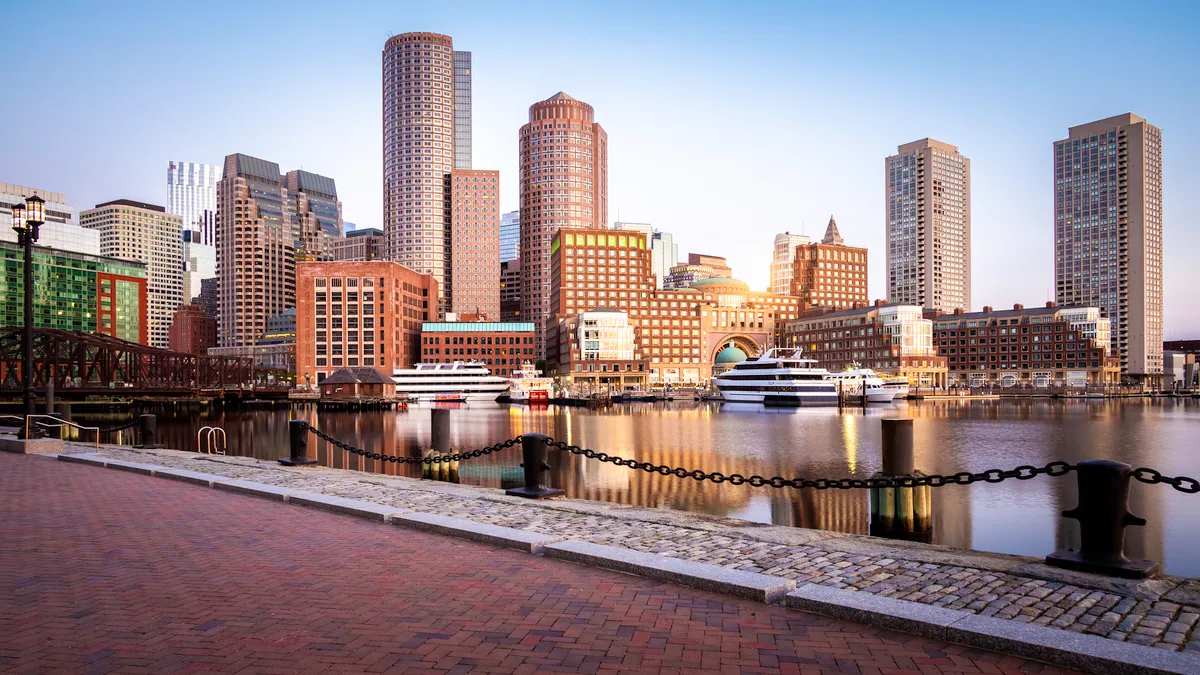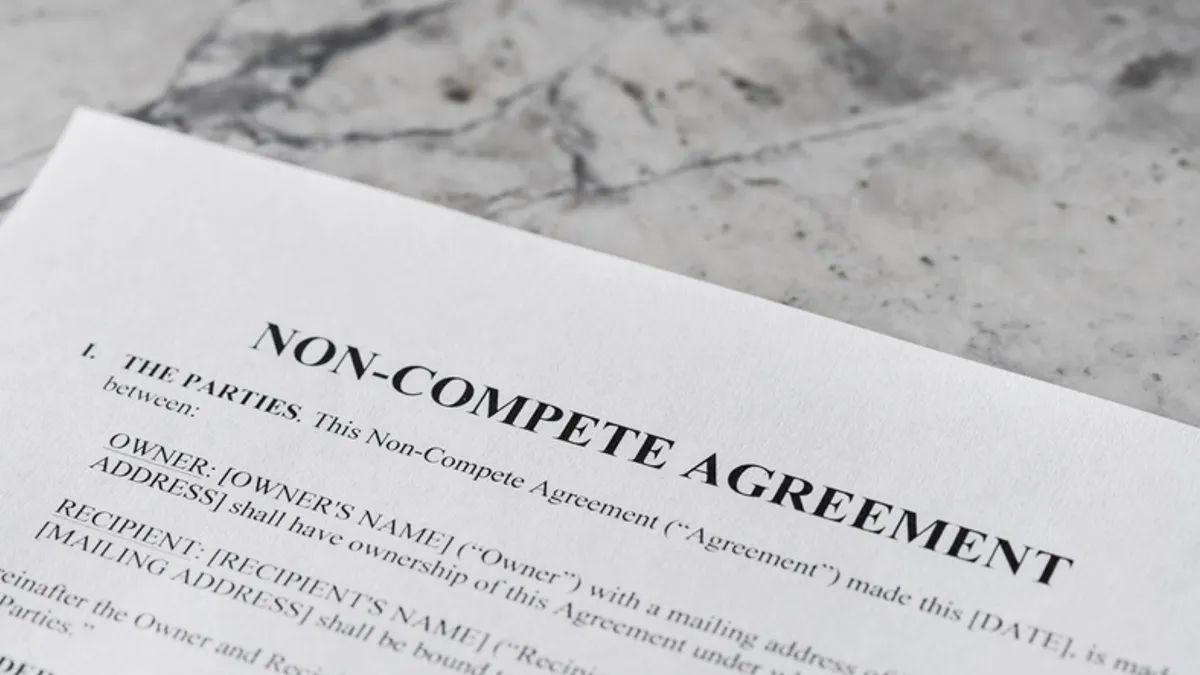Boston building owners and facility managers are gearing up for the first compliance period for the city’s Building Emissions Reduction and Disclosure Ordinance. The building performance standards law is one of 13 in U.S. cities; together the laws will cover roughly a quarter of all U.S. buildings, according to a JLL report released last month.
With 30 more cities committed to passing building performance standards by 2026 or earlier, many are defining what their parameters are and raising questions about how these standards will be enforced, said Jaime Del Álamo, head of ESG & risk Americas at JLL.
Boston’s law covers nonresidential buildings spanning 20,000 square feet or more, residential buildings with 15 or more units and any tax parcel with multiple buildings that collectively meet these thresholds. Nonresidential buildings spanning 35,000 square feet or more and residences of 35 or more units need to meet emissions compliance benchmarks starting in 2025. Emissions compliance for nonresidential buildings ranging from 20,000 square feet to 34,999 square feet and residential buildings of 15 to 34 units is slated to begin in 2030.
The current version of the law sets building emissions limits, said Aiden Callan, Boston’s BERDO program manager.
“It creates a building performance standard to say that buildings of a certain size and a certain type cannot produce more than a certain amount of carbon dioxide emissions per square foot per year.”
Requirements and penalties
Owners of covered buildings must report their buildings’ annual energy and water use every year by May 15, verify reported data with a qualified third-party energy professional and comply with annual emissions limits.
Emission limits for office buildings, for example, are set at 5.3 kilograms of carbon dioxide equivalent per square foot per year in the 2025 to 2029 compliance window, while emission limits for manufacturing and industrial facilities are set at 23.9 kg of CO2e per square foot per year during this period. Allowable emissions will decrease over time, with all buildings expected to reach net-zero emissions by 2050.
What if buildings don’t comply? The largest nonresidential buildings could face a penalty of $1,000 per day if they fail to meet emission standards, while not following reporting requirements could result in a fine of $300 a day. For smaller nonresidential buildings, those penalties are $300 and $150, respectively. Failure to accurately report information could result in fines of between $1,000 and $5,000.
The penalty structure is comparable to that of New York City’s Local Law 97, which began enforcing compliance this year, and Seattle's Building Emissions Performance Standards, a Boston city spokesperson said.
Compliance pathways
Compliance options range from implementing energy efficiency measures to installing renewable energy generation equipment such as solar panels on site to purchasing renewable energy. Owners can also choose to make an alternative compliance payment, equal to $234 per metric ton of carbon dioxide equivalent above the limit, into an equitable investment fund “that is really investing back into decarbonization that serves environmental justice benefits in Boston,” said Hannah Payne, director of carbon neutrality for Boston’s environment department.
Additional flexibility measures can help owners adjust their emissions limits or timelines, Payne said.
“The most straightforward one is the blended emissions standard, which does not require review board approval and is available to anyone who has a mixed-use building with multiple primary uses,” Payne said. “So, if you have a residential building on top, but let’s say you have a restaurant that is 10% of your floor area. You can have 10% of your emissions limit be at that restaurant level,” which is much higher due to the more energy-intensive nature of restaurants.
Portfolio pathways can help owners of multiple buildings that need to comply across their portfolio, Payne said. Individual compliance schedules, which are set based on specific buildings, are another option, with both of these alternative pathways requiring review board approval.
City support
Since 2021, the city has been working with owners to help them report and verify their emissions data, Payne said. “The next thing that we’re really starting to work with building owners to look at is their estimated emissions and their future emission limit, be that starting in 2025 or 2030.”
The city also works with building owners and facilities managers on decarbonization plans, “really walking through the different compliance mechanisms and thinking about what their plan for compliance will be,” Payne said.
For example, city employees might ask building owners “Have they done any energy efficiency work? Are there opportunities for them to work with the Mass Save program to get energy audits done? Do they have plant equipment turnover [expected where] they can switch to an all-electric, efficient option instead? Have they considered buying renewable energy? Are they looking at making alternative compliance payments?” she said.
Of the buildings subject to BERDO’s first emissions compliance period in 2025, “around 70% … should be fine and don’t need to do anything to stay within their emissions limits,” Payne said. For the remaining 25%, “they’ll have options.” For the city, the 2025-2029 compliance period will be “a lot of planning, and then working with those buildings that do have higher emissions intensities to get a plan [in] place,” Payne said.
“Data quality is central for any planning [and] for meeting these limits” Callan said. “Building owners have to be absolutely confident in the data that they're looking at if they're going to make well-informed decisions.”
These measures do not need to be implemented overnight, Payne said. The net zero goal is 25 years after compliance begins in 2025, she noted. “What are the things that you're already planning? How do you … add more energy efficiency, or add decarbonization, into what you already have planned?” she asked.
“The good news is there are the [Inflation Reduction Act] incentives … to be able to support this work. This is the direction that we all need to be moving,” she said.
Subscribe to Facilities Dive to get articles like this each weekday.








